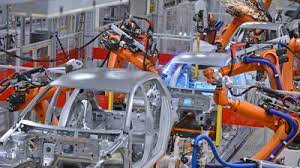Make in India (MII) deviates from India’s traditional self-sufficiency strategy by emphasising global competitiveness. The article criticises MII’s potential protectionist tendencies, emphasising the need of job creation and competitiveness. The effectiveness of MII in meeting commitments, particularly in labor-intensive industries, is a primary emphasis for assessing its impact.
Highlights include:
- Make in India (MII) departs dramatically from India’s traditional self-sufficiency strategy, emphasising global competitiveness rather than isolation.
- The article criticises MII’s potential protectionist inclinations, highlighting the historical problems of imprudent protection in the 1970s and 1980s.
- The article emphasises the crucial need of MII delivering on promises, notably in developing a competitive manufacturing sector, and the importance of job creation for India’s enormous labour force.
Key Challenges:
- There are concerns regarding the implementation of MII, particularly in sectors where tariff duties are raised for protection, which could have detrimental implications.
- The essay concerns MII’s effectiveness in relation to its goals, advocating a closer look at its influence on job creation and competitiveness.
Key Concepts:
- Make in India (MII) is a policy project that began in 2014 with the goal of transforming India into a worldwide manufacturing and design hub.
- Licence Raj: A pre-1991 regulatory structure in India that forced firms to get licences for various operations, resulting in bureaucracy and inefficiency.
- Production-Linked Incentive (PLI): A programme aiming at encouraging investments in vital areas and cutting-edge technologies in order to improve industrial efficiency.
Key Quotes:
- “MII is very different from self-sufficiency, and we should move on from this baseless comparison.”
- “Every country that has ‘taken off’ before us has been export competitive.”
- “Devising an industrial policy for mass job creation in India is the touchstone against which success ought to be gauged.”
Primary Quotes:
- “Job creation for our abundant factor, especially women, is key, and that is only possible with labor-intensive manufacturing.”
- “In the absence of high frequency data on PLI, either on value added or jobs generated, a moral compass to shape a better world ought to be employed in abundant measure.”
Critical Analysis:
- The paper examines MII’s potential protectionist elements critically, citing parallels with historical issues.
- It emphasises the importance of job creation, particularly in labor-intensive sectors, as a key indicator for assessing MII’s performance.
- The lack of high-frequency data on PLI is emphasised, requiring policymakers to strike a compromise between empirical interpretation and moral considerations.
Way Forward:
- According to the essay, industrial policies, such as the National Industrial Policy (NIP), should prioritise labor-intensive sectors in order to promote mass employment development.
- It emphasises the need of MII continuing to succeed in labor-intensive manufacturing for the overall improvement of India’s economic environment.
Source: https://www.imf.org/en/Publications/WP/Issues/2019/03/26/The-Return-of-the-Policy-That-Shall-Not-Be-Named-Principles-of-Industrial-Policy-46710

